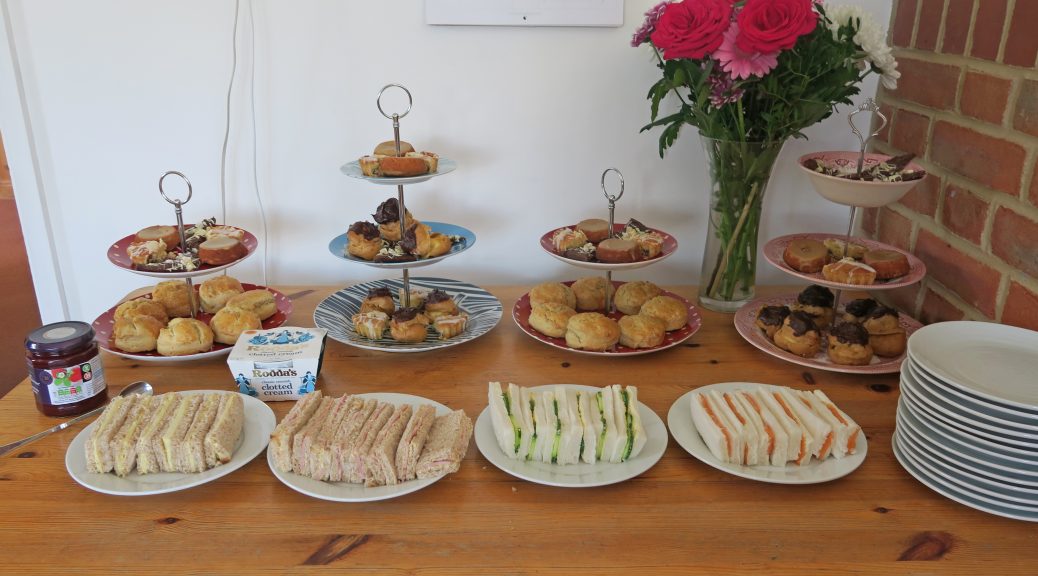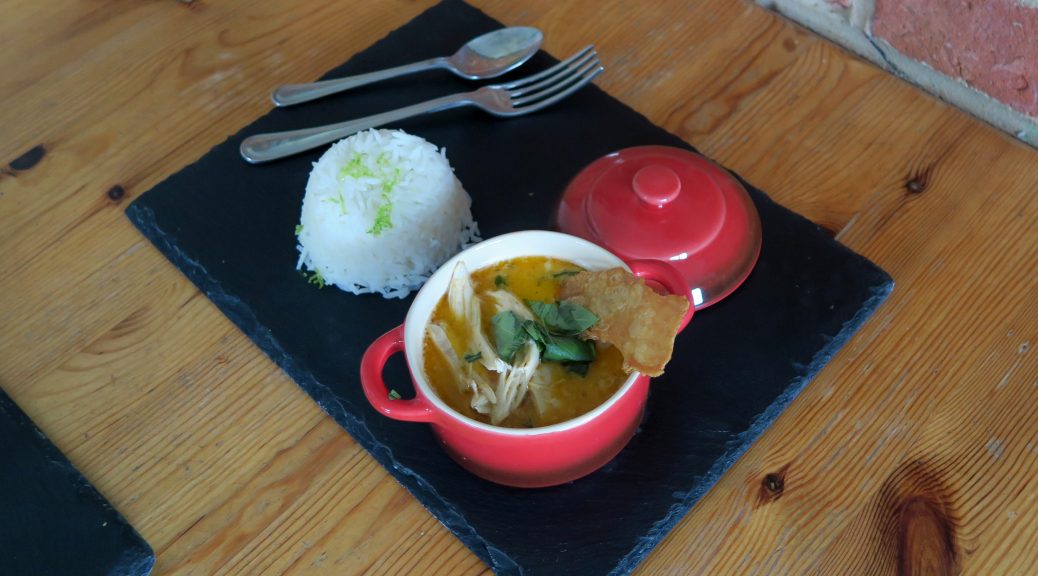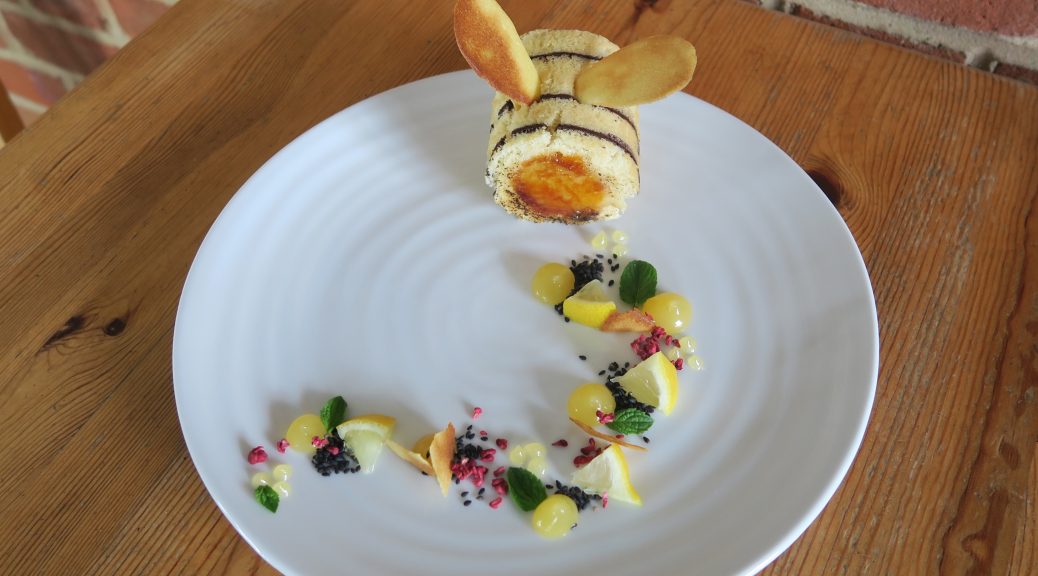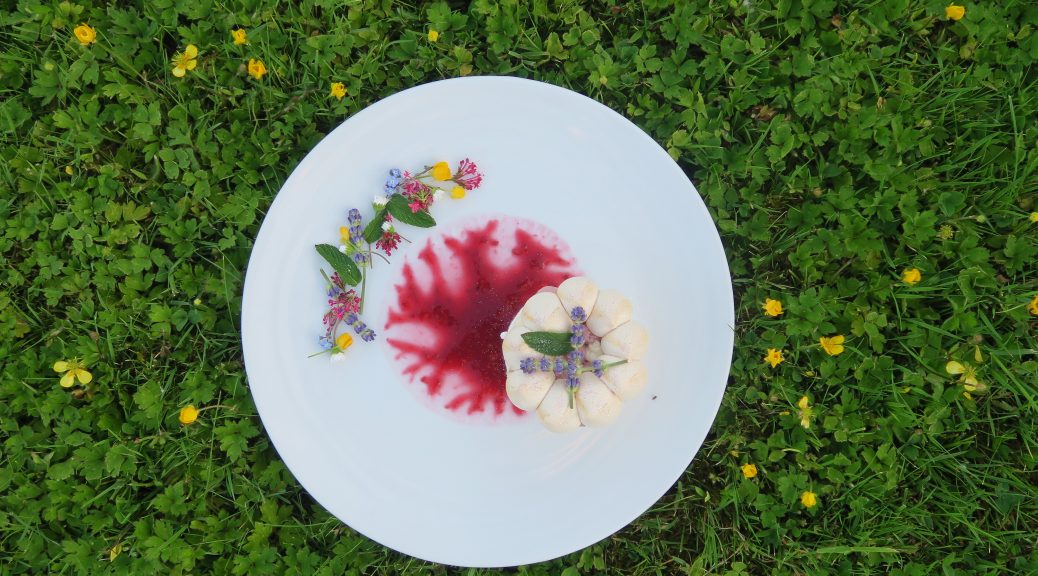“THERE WAS A BUZZING AND A WHIRRING AND A DRONING IN THE AIR. BEES WERE EVERYWHERE. AND SUCH BEES! BILBO HAD NEVER SEEN ANYTHING LIKE THEM.”
I have to confess to being a huge Tolkien fan, and so either LOTR, The Saumarillion, or The Hobbit had to pop up on here sooner or later this month. Whilst I’ve taken The Hobbit as specific inspiration for this one, you could say that it’s generally a Middle Earth inspired dessert.

When thinking about making a Hobbit-inspired dish you’d probably expect some kind of ring cake, or generally a ring-shaped thing. So you may be wondering why I’ve made a honey bee out of cake instead? Well there is a reason. When Gandalf, Bilbo and the dwarfs end up staying at Beorn’s home before departing for Mirkwood (sorry to anyone who hasn’t read/seen The Hobbit), there’s lengthy descriptions about the gigantic honey bees in the garden which really hit my imagination, and therefore I’ve gone bee-themed for this one. As a parting gift Beorn also gives the company jars of honey from his bees to nourish them on the trip and anyone who’s seen the film might remember the big fuzzy bees swarming around the barn as they run in.

Whilst Middle Earth inspired the components of the dish, it was my trip to the Edinburgh Fringe a couple of years ago that inspired the flavours. Whilst up there I went to this amazing ice-cream shop which always had a selection of really interesting flavours. One day I had the lemon, honey and black sesame ice-cream and it was sublime! So, as a result, lemon, honey and sesame all feature in here. There was also this really cute campervan at the festival that sold little creme brulees and Catalan creams (basically creme brulees flavoured with lemon and cinnamon). This inspired me to fill my honey bee with some Catalan cream, set with gelatin, and then caramelise sugar on either end. You could also fill the cake with pannacotta, mousse or jelly if you’d prefer!

Recipe
Makes 2 Bees (but leaves some leftover cake and biscuits to nibble on!)
Time: 2 1/2 hours, plus setting time
Ingredients
For the Décor paste
- 114g Unsalted butter
- 114g Icing sugar
- 2 Large egg whites
- 90g Plain flour
- 40g Cocoa powder
- A few drops of black food colouring (optional)
For the Honey cake
- 50g Butter
- 20g Runny honey
- 110g Self raising flour, sifted
- ½ tsp Baking powder
- 2 Large eggs
- 120g Caster sugar
For the Catalan cream
- 335ml Whole milk
- 50g Black sesame seeds, plus extra to garnish
- 1 Cinnamon stick
- 2 leaves of Gelatin
- Zest of 1 Lemon
- 1 tsp Vanilla bean paste
- 200g Caster sugar, plus extra for caramelising
- 1 ½ tbsp Cornflour
- 2 Medium egg yolks
For the Honey tuile
- 20g Runny honey
- 30g Unsalted butter
- 1 Egg white
- A few drops of Vanilla extract
- A pinch of Salt
- 3tbsp Plain flour
To Decorate
- Lemon curd
- 1/2 Lemon, cut into little pieces
- Fresh Mint leaves
- Freeze dried raspberries (optional)
Method
- Line a 38x26cm tin with butter and baking paper. Pre-heat the oven to 160˚C.
- Begin by making the décor paste that’ll make the stripes on your bees. Put the butter and icing sugar into a bowl and cream them together until smooth. Add the egg whites and whisk until combined. Then add the flour, cocoa powder and food colouring (if you’re using it) and mix together until a uniform colour and smooth.
- Pour the batter into a piping bag with a small, round nozzle. Then pipe lines horizontally across the lined tin, about 2cm apart, to make your stripes. Leave the tin the freezer for at least 20 minutes, or until needed.
- Now make the honey cake. Put the butter, honey, flour, baking powder, eggs and sugar into a bowl and whisk until combined – an electric whisk here can make things easier!
- Pour the cake mixture over the stripes in your tin and smooth the mixture out so it’s an even layer. Then bake the cake in the oven for 15-20 minutes, until puffed up, golden brown and so that the cake springs back when it’s poked gently.
- Meanwhile take 2, 6 ½ cm diameter metal rings. Grease them with butter and then line them with clingfilm.
- When baked, turn the cake sheet out onto a wire rack and remove the baking paper. Quickly cut the cake into strips, following the lines of the stripes (so not cutting across the stripes). The width of the strips should be the same as the height of your metal rings.
- Take one of the still warm cake strips and fit it into the ring. To make a tight fit you might need to cut the strip to make it shorter, but do this carefully as you need the cake to fully wrap around the inside of the ring. Repeat with the other ring and then leave to one side for later.
- Next make the Catalan cream. Take a large saucepan and put in the milk, cinnamon, lemon rind, sesame seeds, and vanilla. Bring to the boil and then leave to simmer for a couple of minutes. Sieve the milk to remove the sesame seeds and then pop to one side.
- Put the gelatin into a bowl with some cold water and leave for at least 5 minutes until soft and flexible.
- In another bowl whisk the egg yolks, cornflour and 150g of the sugar until thick and creamy. Slowly pour the milk into the mix, whisking constantly until smooth.
- Pour the mixture back into the pan and place over a medium heat. Stir the mixture constantly until it beings to thicken. Add the gelatin to the mix and whisk in until dissolved. Then take the pan off the heat and leave to cool until luke warm.
- Carefully pour the cooled cream mixture into the rings lined with the cake and leave to set in the fridge for at least 3 hours, or better still overnight.
- Now make the tuiles. Put the butter and honey into a bowl and mix together until smooth. Add the egg white, vanilla and a pinch of salt. Then add the flour and mix again until all combined.
- Take a sheet of acetate (or you can improvise straight onto a baking sheet) and cut out a wing shape with a scalpel. Line 2 baking trays with baking paper.
- Place your stencil onto your baking tray. Then dollop 1 tsp of the tuile mixture onto the space in the stencil (you don’t need very much). Take a palette knife and smooth the mixture over the gap and then sweep the knife across the stencil at a 45˚ angle to remove the excess mixture and to make the shape clear. Repeat over the rest of the baking sheets to get a lot of little wings. (You’ll need two per bee, but some will break so always make more than you need).
- Pre-heat the oven to 140˚C. Bake your tuiles for 5-8 minutes until just starting to brown at the edges. Leave to cool completely and then transfer to a wire rack until needed.
- Once the Catalan cream has set, sprinkle a little caster sugar over the exposed cream so it’s covered. Then, using a blowtorch, lightly brush the sugar with the flame until golden and caramelised. Leave to set for a few minutes before turning the ring over and repeating on the other side so both ends of the bee are set with caramel. Repeat for all your bees.
- Now start plating – you can do this on any shape of plate but I find rectangle or round works well. Remove your bee from it’s ring, peel off any clingfilm and place it on your plate. Take a sharp knife and make two small incisions into the cake near the top – these will be the holes for your wings. Take two relatively similarly sized wing tuiles and insert them into the holes you just made.
- Next make the trail behind the bee. Spoon the lemon curd into a piping bag or bottle and squeeze little dots in a swirl across the plate- this swirl will be the template for the rest of your garnishes. Take your little lemon pieces and place them along the swirl. Then take a teaspoon and sprinkle little piles of sesame seeds and freeze-dried raspberries along the same shape. Finish off with some fresh mint leaves and some broken bits of tuile to garnish. Serve!

Thanks for reading!
Emma x


















